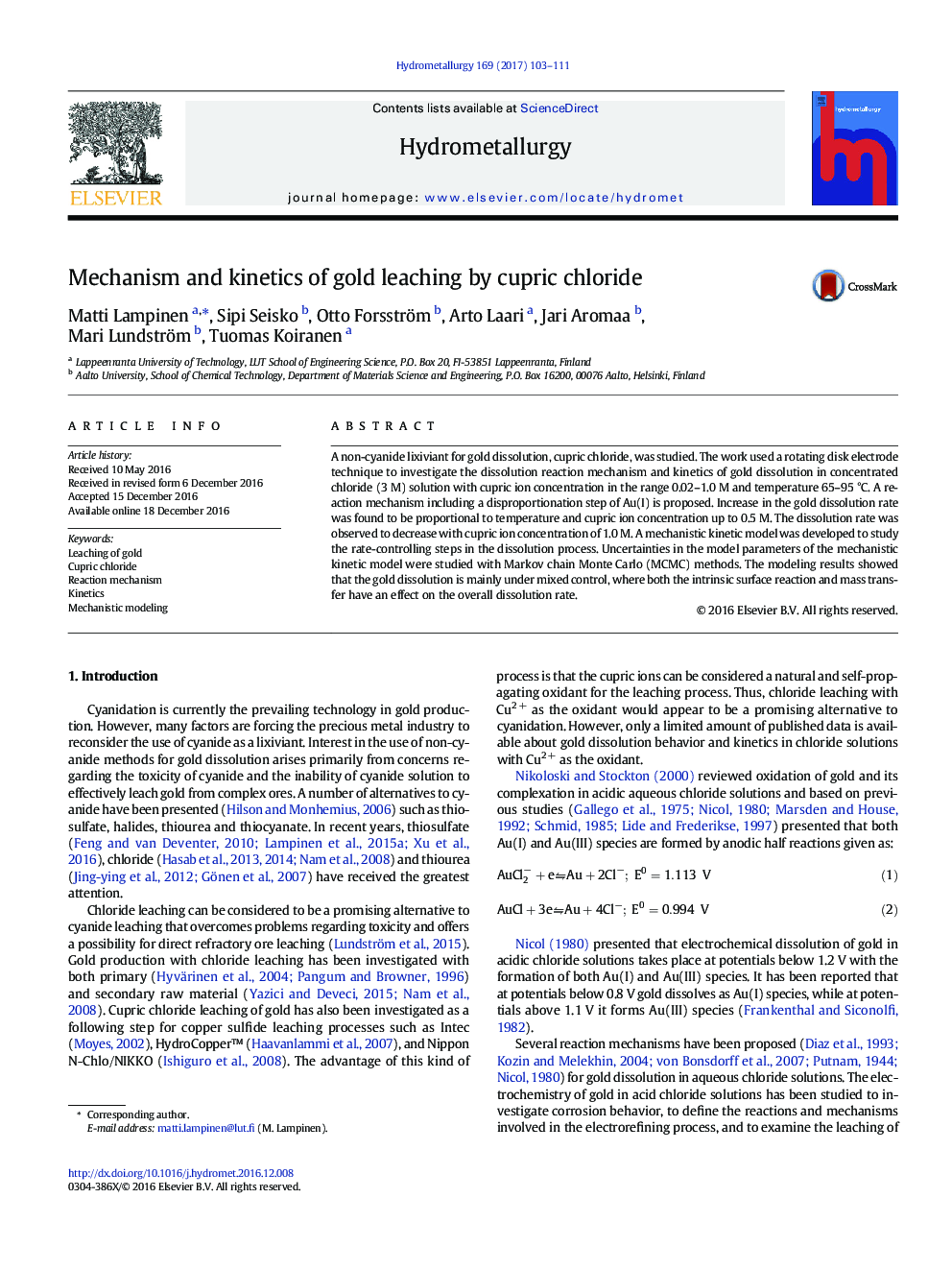| Article ID | Journal | Published Year | Pages | File Type |
|---|---|---|---|---|
| 4769316 | Hydrometallurgy | 2017 | 9 Pages |
Abstract
A non-cyanide lixiviant for gold dissolution, cupric chloride, was studied. The work used a rotating disk electrode technique to investigate the dissolution reaction mechanism and kinetics of gold dissolution in concentrated chloride (3 M) solution with cupric ion concentration in the range 0.02-1.0 M and temperature 65-95 °C. A reaction mechanism including a disproportionation step of Au(I) is proposed. Increase in the gold dissolution rate was found to be proportional to temperature and cupric ion concentration up to 0.5 M. The dissolution rate was observed to decrease with cupric ion concentration of 1.0 M. A mechanistic kinetic model was developed to study the rate-controlling steps in the dissolution process. Uncertainties in the model parameters of the mechanistic kinetic model were studied with Markov chain Monte Carlo (MCMC) methods. The modeling results showed that the gold dissolution is mainly under mixed control, where both the intrinsic surface reaction and mass transfer have an effect on the overall dissolution rate.
Related Topics
Physical Sciences and Engineering
Chemical Engineering
Chemical Engineering (General)
Authors
Matti Lampinen, Sipi Seisko, Otto Forsström, Arto Laari, Jari Aromaa, Mari Lundström, Tuomas Koiranen,
